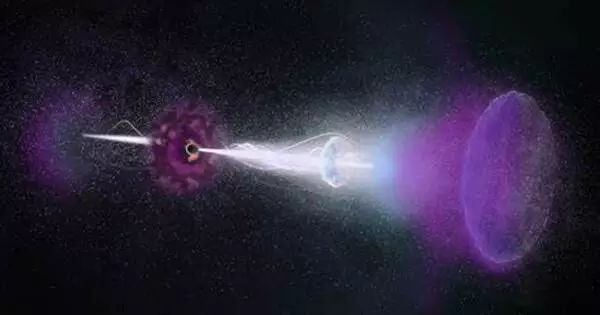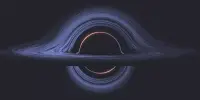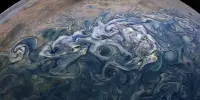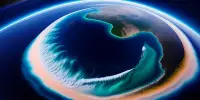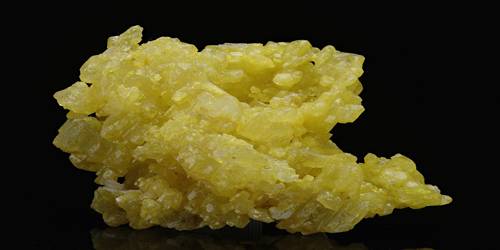Advanced computer simulations and theoretical calculations are assisting astronomers in better understanding the origins of some of the universe’s most energetic and mysterious light shows, known as gamma-ray bursts, or GRBs. The new unified model confirms that some long-lasting GRBs are produced by cosmic mergers that produce an infant black hole surrounded by a massive disk of natal material.
Astronomers previously assumed that black holes that produce long GRBs form when massive stars collide. The new model, however, shows that they can also form when two dense objects merge, such as a pair of neutron stars (the dense, dead remnants of massive stars) or a black hole and a neutron star. The findings explain recently observed long GRBs that astronomers couldn’t link to collapsing stars.
The simulation’s creators present their results in The Astrophysical Journal Letters.
Our findings, which connect observations with underlying physics, have unified many unresolved mysteries in the field of gamma-ray bursts. For the first time, we can look at GRB observations and know what happened before the black hole formed.
Ore Gottlieb
“Our findings, which connect observations with underlying physics, have unified many unresolved mysteries in the field of gamma-ray bursts,” says Ore Gottlieb, lead author on the new study and a research fellow at the Flatiron Institute’s Center for Computational Astrophysics (CCA) in New York City. “For the first time, we can look at GRB observations and know what happened before the black hole formed.”
GRBs are some of the most bright and violent events in the universe. GRBs have fascinated and perplexed astronomers since their discovery in 1967. Even decades later, the precise mechanisms that generate the powerful gamma-ray blasts remain unknown. Astronomers have discovered two distinct populations of GRBs over the years: those that last less than a second and those that last 10 seconds or more.
Short GRBs are caused by jets launched after the merger of two compact objects, while long GRBs can occur when jets are launched during the collapse of massive rotating stars. However, two unusually long GRB observations in the last year suggested that collapsing behemoths were not the only thing causing long GRBs.

Gottlieb and his colleagues used cutting-edge simulations to investigate how mergers of massive compact objects can produce GRBs. The new simulations took months to complete and were partially performed on one of the Flatiron Institute’s supercomputers. The new simulations begin when the two compact objects are in close orbit and continue to track the jets until they are far from the merger site. This method enables the researchers to make fewer assumptions about the physics at work. The scientists created a unified model for the origins of GRBs by combining simulations with constraints from astronomical data.
The researchers discovered that the unusual GRBs are produced as a result of a merger of two compact objects. After colliding, the objects form a black hole surrounded by a large accretion disk, which is a rapidly rotating doughnut of magnetically charged leftover material capable of producing long GRBs. This simulation data helps astronomers understand not only the objects causing these GRBs, but also what came before them.
“If we see a long GRB like the ones observed in 2022, we now know that it’s coming from a black hole with a massive disk,” Gottlieb says. “And knowing there is a massive disk, we now can figure out the ratio of the masses of the two parental objects because their mass ratio is related to the properties of the disk. For example, the merger of unequal-mass neutron stars will inevitably produce a long-duration GRB.”
The researchers hope to use the unified model to determine what objects cause short GRBs. According to the model, those bursts could be caused by black holes with smaller accretion disks, or they could be caused by an object known as a hypermassive neutron star, which is an unstable form of the star that quickly collapses to form a black hole but not before emitting short GRBs. The scientists hope that with more GRB observations, they will be able to refine their simulation and determine the origins of all GRBs. Though GRB sightings are still uncommon, astronomers hope to capture many more when the Vera C. Rubin Observatory begins observations in early 2025.
“As we get more observations of GRBs at different pulse durations, we’ll be better able to probe the central engines powering these extreme events,” Gottlieb says.
